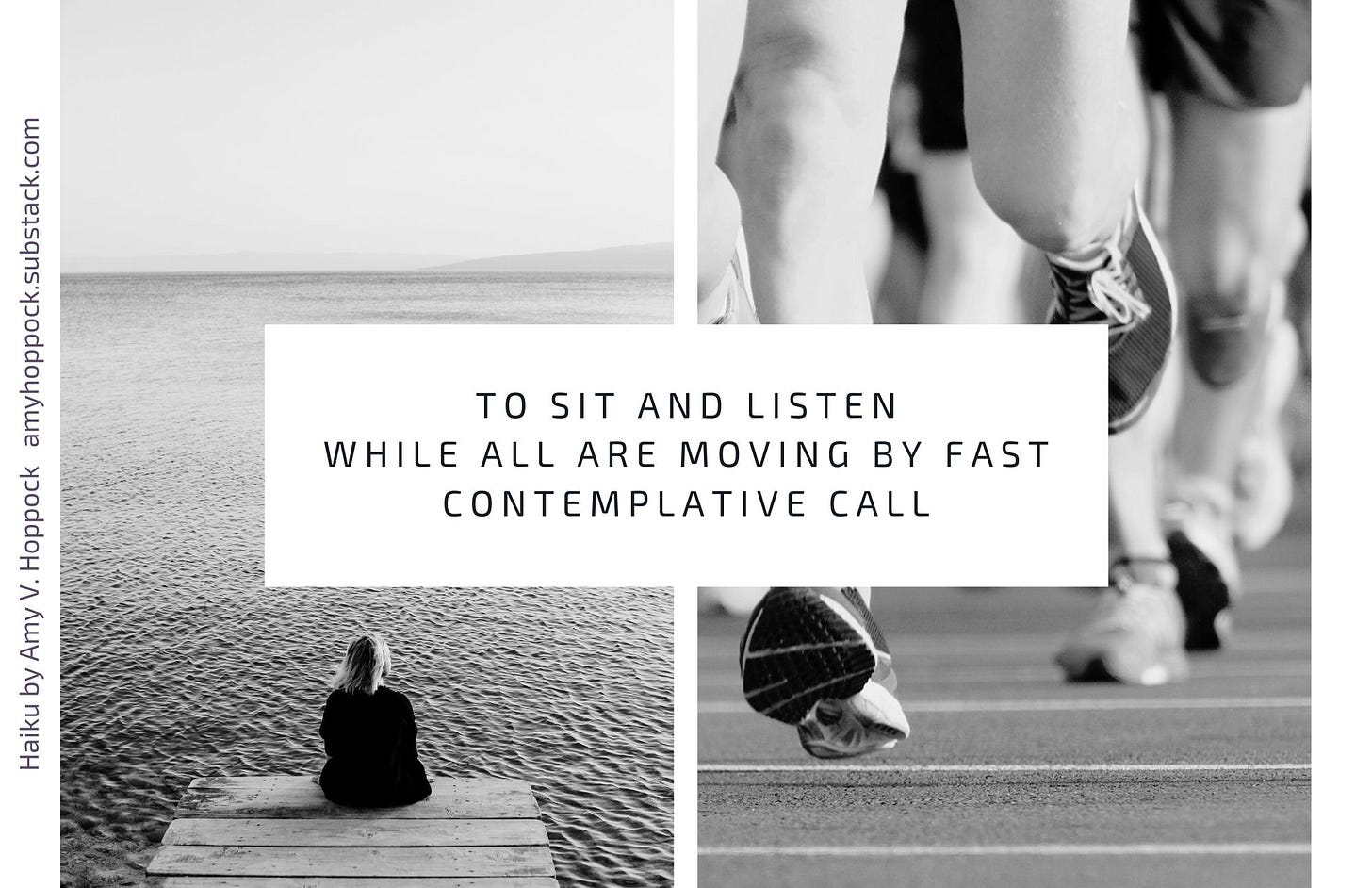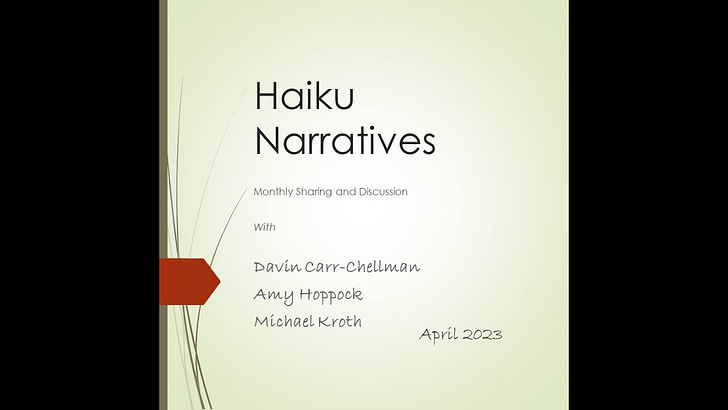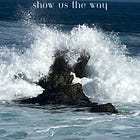This week, Michael, Davin, and I recorded our 40th (!!!) haiku conversation. When we started this experiment in 2018, we had no idea that it would continue years later!
As a reminder (or introduction), our haiku practice has several parts. We each select a haiku we’ve written, create a postcard (physical or digital), and share it with each other.
When I receive a haiku from Michael and Davin each month, I write a haibun (response) for each haiku. Each month, we share one haiku and write three haibun. Then, we will get on a Zoom meeting and share each haiku with each haibun response.
There is always (always) a magical synchronicity that seems to happen. We don’t select a theme or coordinate anything other than agreeing on a date and time. And yet, there is always (always!) a theme that emerges.
I could write about how this magic feels, but I’d love to invite you to see what happens. This month, there was a haiku on wildflowers, a contemplative call, and baseball. At first glance, I wondered if our synchronicity had run out, but no, when you watch our video…you’ll see.
When was the last time you wrote a haiku? This is your invitation to write haiku.
I like to think of haiku as putting a frame around a single moment. (Which is the title of our haiku book1.) A haiku is poetry with boundaries. The format is 5-7-5.
Line 1: 5 syllables (This can be one, two, or five words. I do what I learned in elementary school and clap out the syllables!)
Line 2: 7 syllables
Line 3: 5 syllables
That’s it! You’ve written a haiku.
I find that it’s helpful to identify an idea and then think about the absolute essence of the idea. I will ask myself questions like:
What is the energy?
What is the feeling?
What is the longing?
Why did the sight, emotion, event, word, etc., catch my attention?
What is the smallest and deepest way to express myself?
What descriptive words are needed, and what is excess?
I have written about haiku a number of times. Here are two of my favorite posts about haiku.

Perhaps one of these thoughts on haiku will resonate with you and encourage your haiku practice!
“We are touched by something, and it causes us to have feelings. We then share those feelings through haiku…so when we make a haiku, we are not merely using physical images taken from our experiences to express our feeling. Instead, we are letting our attention lead us to our feeling, and the images we choose for our haiku express that feeling. So writing haiku is not some kind of excitement but a concentration of everyday life.”
-Bruce Ross-Writing Haiku: A Beginners Guide to Composing Japanese Poetry
Haiku is an art that seems dedicated to making people pay attention to the preciousness and particularity of every moment of existence. I think that poetry can do that.
Robert Hass
I seldom feel trapped by my world. Setting up rules and restrictions is part of the process. It gives your world shape. I always look at these things like haiku: you have to work within certain parameters, but within them, you’re completely free.
Richard Kadrey
Remember technology does not make good work. You can still write a poem on a brown paper bag, and haiku is just as profound as the pyramids.
James Turrell
This is not an affiliate link or anything. I just love our book and the heart and soul we put into it!











Congrats on the steady practice of haiku conversations!
Amy, thank you for this wonderful essay. And I adore doing this with you and Davin! It’s fun, meaningful, collaborative, and so much more. Thank you and thank you and thank you.